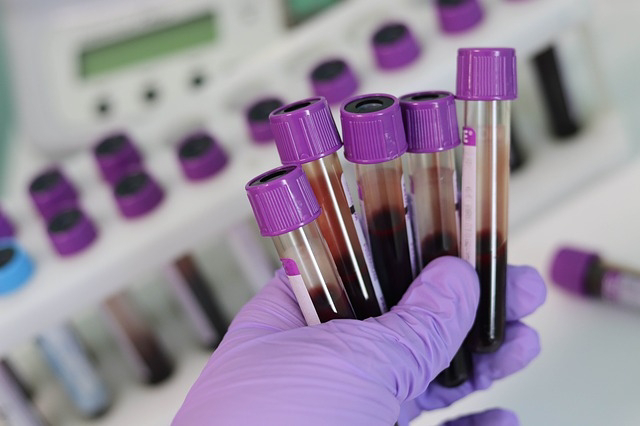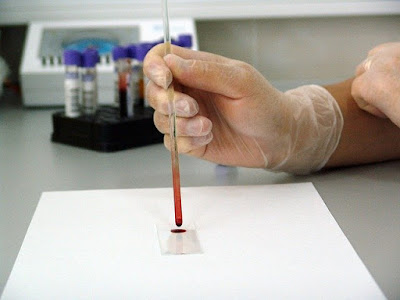Introduction- Today's topic is beta thalassemia, it is a part of thalassemia and is divided in two different types; 1. Alpha thalassemia, 2. Beta thalassemia.
Beta thalassemia is a natural disorder there is a shortage in the production of Β-globin chains of hemoglobin, i.e.
oxygen-carrying proteins in red blood cells or RBCs for short.
Beta thalassemia is most common, commonly seen in the Mediterranean, in Africa as well Residents of South East Asia.
Typically, hemoglobin is composed of four globins chains, each bound in a heme group. There four major types of globin chain - alpha(α), beta(β), gamma(γ), and delta(δ). These four chains of globin meet separately ways to give different types of hemoglobin. First, there is hemoglobin F (or HbF), there F represents the hemoglobin of the fetus, too made up of two cy-globins and two γ-globins chains. Hemoglobin A (or HbA), a large adult hemoglobin form, made up of two cy-globins and two β-globin chains. Finally, hemoglobin A2 (or HbA2) puts a small part of adult hemoglobin in the blood, also made up of two cy-globins and two δ-globins chains. With beta thalassemia, there is either a complete or complete β-globin chain deficiency, due to the modification of the point, which if one The nucleotide in DNA is replaced by nicototide, on the type of beta globin present in the chromosome 11. And again and again, this transformation takes place in two districts of the so-called facilitator
sequence and splice areas, affecting how mRNA is studied. The result is
reduced beta globin, or not at all synthesis chain. And since this is a disease that brings the mind back to the body,
two duplicate copies are available in one version, one at a time parent, you need to develop the disease.
If a person has one modified version that is reduced or missing product codes
production of beta globin chains, then they have beta minor thalassemia. If a person it has two modified genes a combination of beta globin, then said he has beta thalassemia intermedia. If a person has two β0 changes, no beta globin chains are produced, and they exist he said he had severe beta thalassemia. When there is a deficiency of β-globin chain, free α chains accumulate within the red blood cell cells, and they come together to form intracellular inclusions, which damage red blood cells cell membrane. This causes hemolysis, or redness rupture of blood cells in manure; or extravascular hemolysis, in which the blood is red cells are destroyed by macrophages in spleen. Hemolysis causes hemoglobin to break down directly into plasma, where it is reconstituted into iron and bilirubin excluded. Over time, excess bilirubin leads to jaundice, and to excessive iron deposition leads to secondary hemochromatosis. At the same time, hemolysis leads to hypoxia, because there are fewer red blood cells in order carry oxygen to the organs and bones. And a the effect of hypoxia is signature bone marrow, and extramedullary tissue
as liver and width, increasing red the production of blood cells, which may cause bone loss context containing bones, such as those in skull and face, as well as courage and breadth, to raise. Now, minor beta thalassemia is more common
asymptomatic. On the other hand, with beta severe thalassemia, symptoms do not develop up to the first three to six months of life. That’s because in the first 3 to 6 months Healthy, fetal hemoglobin is still produced, and that process uses some free ones Chains of α.
Significant symptoms of beta thalassemia symptoms include similar symptoms of anemia pallor, shortness of breath, and mild paralysis; jaundice, an upset stomach due to enlargement liver and spleen, hepatosplenomegaly; and back growth. Complications due to hemochromatosis include arrhythmias, pericarditis, cirrhosis, hypothyroidism and diabetes mellitus. The result of the diagnosis of severe beta thalassemia is possible put enlarged foreheads and bones on the cheek, so-called chipmunk facies. In the gap on X-ray, the bones of the scalp show radiolucent bone marrow with fine iron, such as hair, which looks like h.
Conclusion- Beta thalassemia is a natural disorder there is a shortage in the production of Β-globin chains of hemoglobin. Beta thalassemia is most common, commonly seen in the Mediterranean, in Africa as well Residents of South East Asia. Typically, hemoglobin is composed of four globins chains, each bound in a heme group. There four major types of globin chain - alpha(α), beta(β), gamma(γ), and delta(δ).
Thank for reading. Keep following- what maybe you don't know about health and politics












0 Comments